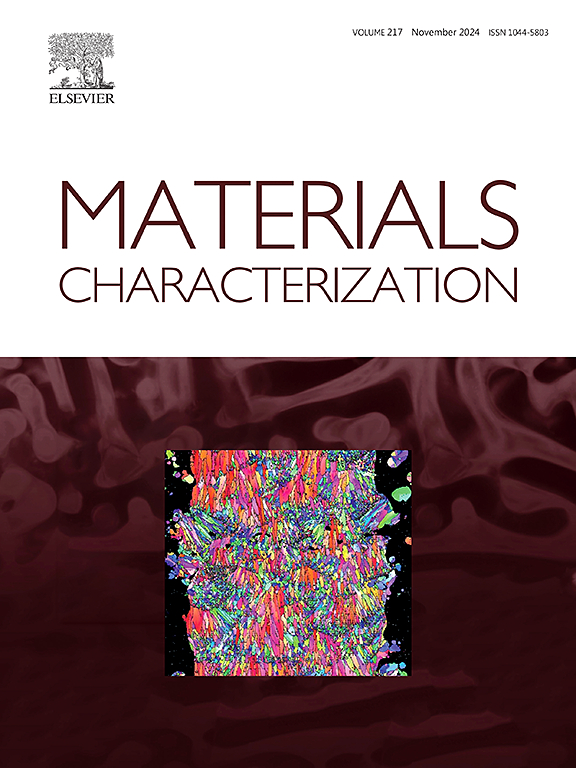Formation of twin-density gradient induced by 9R structure transformation and boundary migration to improve performance in GH4586 superalloy
IF 4.8
2区 材料科学
Q1 MATERIALS SCIENCE, CHARACTERIZATION & TESTING
引用次数: 0
Abstract
In this work, the evolution mechanisms of microstructure subjected to deformation and heat treatment were thoroughly investigated using scanning electron microscope (SEM), electron backscatter diffraction (EBSD) and transmission electron microscope (TEM) observations. During deformation, γ matrix transformed into 9R structure via gliding of a/6[11] partial and then transformed into twin structure via gliding of a/6[11] and a/6[11] partials. Besides, fast grain boundary migration rate was beneficial for the development of twin boundaries (TBs). However, severe interaction between pre-existed TBs and dislocations dominated by activation of (11)[011] slip system would cause deviation of rotation angle and shift of rotation axis, leading to decreasing TBs density. During heat treatment, stored-energy-driven boundary migration was weakened due to consumption of stored energy, and curvature-driven boundary migration became dominated at different regions, reducing the positive effects of boundary migration on TBs development. Based on the above analysis, a novel design of microstructure with gradient TBs density by controlling-strain deformation and gradient-temperature heat treatment was proposed. Due to gradient strain, TBs density increased from the low-strain (LS) region to the high-strain (HS) region induced by 9R structure transformation and boundary migration. Due to gradient temperature, TBs density decreased obviously in the low-strain and high-temperature (LS-HT) region under the effect of grains annexation, while it only decreased slightly in the high-strain and low-temperature (HS-LT) region due to the poorer grain boundary mobility. Then, tensile strength and fracture toughness tests were carried out to evaluate the performance of gradient microstructure. The results showed that the as-prepared microstructure improved tensile strength by 13.6% from the intermediate transition (IT) region to the HS-LT region and fracture toughness by 11.7% from the IT region to the LS-HT region. Finally, the influence of as-prepared gradient microstructure on mechanical properties was thoroughly discussed.
求助全文
约1分钟内获得全文
求助全文
来源期刊

Materials Characterization
工程技术-材料科学:表征与测试
CiteScore
7.60
自引率
8.50%
发文量
746
审稿时长
36 days
期刊介绍:
Materials Characterization features original articles and state-of-the-art reviews on theoretical and practical aspects of the structure and behaviour of materials.
The Journal focuses on all characterization techniques, including all forms of microscopy (light, electron, acoustic, etc.,) and analysis (especially microanalysis and surface analytical techniques). Developments in both this wide range of techniques and their application to the quantification of the microstructure of materials are essential facets of the Journal.
The Journal provides the Materials Scientist/Engineer with up-to-date information on many types of materials with an underlying theme of explaining the behavior of materials using novel approaches. Materials covered by the journal include:
Metals & Alloys
Ceramics
Nanomaterials
Biomedical materials
Optical materials
Composites
Natural Materials.
 求助内容:
求助内容: 应助结果提醒方式:
应助结果提醒方式:


